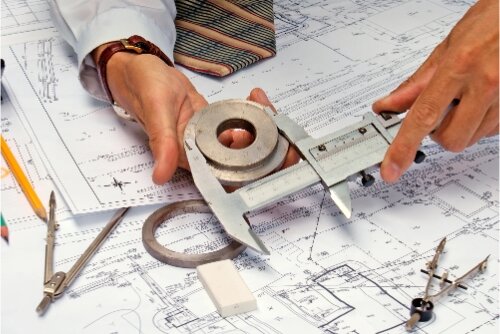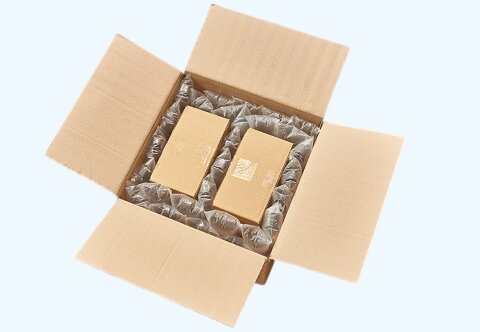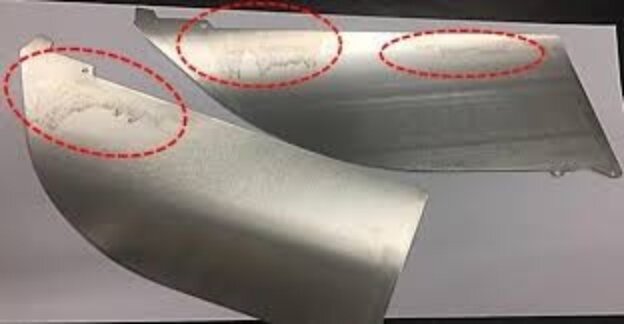Metal fabrication can be complex. Many engineers and designers struggle to choose the right technique for their projects. This often leads to delays, increased costs, and subpar results. But with the right knowledge, you can make informed decisions and achieve optimal outcomes.
TPiercing, punching, and blanking are three key metal fabrication techniques. Each method has unique characteristics and applications. TPiercing creates holes without removing material. Punching cuts out shapes from sheet metal. Blanking produces separate pieces from a larger sheet.
Let’s explore each technique in detail. We’ll cover their processes, advantages, and ideal use cases. This information will help you make better decisions in your metal fabrication projects.
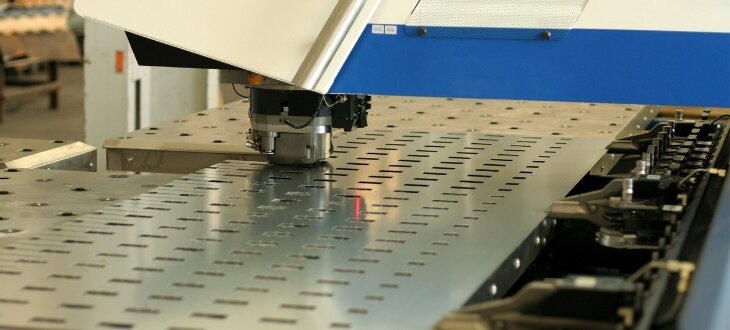
The Basics of Metal Cutting Processes
What is Piercing?
Piercing is a metal fabrication technique that creates holes in sheet metal. It uses a punch to penetrate the material, forming an opening without removing any metal. The process displaces the material, often creating a slight bulge around the hole’s edge.
Piercing works well for producing small, precise holes in thin sheets. It’s commonly used in industries like automotive and electronics.
What is Punching?
Punching involves cutting out specific shapes from sheet metal. A punch press forces a tool through the material, creating a predetermined form. The cut-out piece, called a slug, is typically discarded as scrap.
This technique excels at making repeatable shapes quickly. It’s ideal for mass-producing parts with consistent features.
What is Blanking?
Blanking is a process that cuts out a desired shape from a larger metal sheet. Unlike punching, the cut-out piece in blanking is the finished product, not scrap. The remaining sheet becomes the waste material.
This method produces flat, uniform parts with clean edges. It’s highly efficient for creating large quantities of identical pieces.
How Piercing, Punching, and Blanking Work
Mechanism of Piercing in Metal Fabrication
Piercing is a precise operation. Here’s how it works:
- A sharp tool called a punch aligns with the metal sheet.
- The punch moves downward with force.
- It penetrates the metal, creating a small hole.
- The excess metal, or slug, falls through a die beneath.
The process is quick and repeatable. It’s ideal for creating multiple small holes in a single operation.
Mechanism of Punching in Metal Fabrication
Punching follows a similar principle to piercing but on a larger scale:
- A punch and die set up in a press.
- The metal sheet is positioned between them.
- The punch drives down with significant force.
- It pushes through the metal, creating an opening.
- The punch retracts, leaving the desired hole.
Punching can create various shapes. The punch and die determine the final form.
Mechanism of Blanking in Metal Fabrication
Blanking cuts out entire shapes from metal sheets:
- A custom-designed die mounts on a press.
- The metal sheet feeds into the press.
- The die comes down with force.
- It cuts through the metal, separating the desired shape.
- The cut-out piece becomes the finished product.
Blanking produces clean edges on the cut-out piece. The remaining sheet metal becomes scrap.
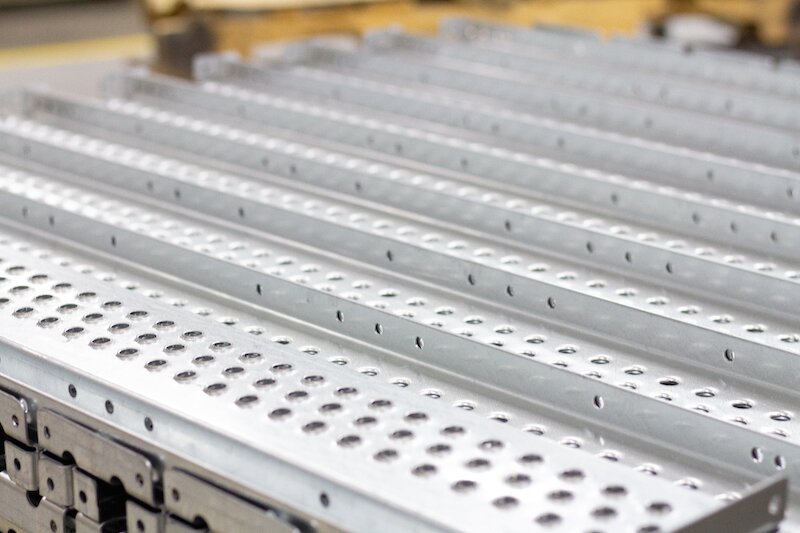
Comparing the Key Differences
Material Removal: Piercing vs Punching vs Blanking
Piercing stands out in this comparison. It doesn’t remove material from the sheet. Instead, it displaces metal to create an opening. This process can lead to slight deformation around the hole’s edge.
Punching and blanking both remove material. In punching, the removed piece is scrap. The hole left behind is the desired result. Blanking flips this concept. The removed piece becomes the finished product, while the remaining sheet is discarded or recycled.
Shape and Size of Holes: Piercing vs Punching vs Blanking
Piercing typically creates smaller, simpler holes. These are often round but can be square or other basic shapes. Compared to other methods, the size range is limited.
Punching offers more versatility in shape and size. It can produce various forms, from simple circles to complex designs. The size range is broader than piercing, but it still has upper limits based on the equipment.
Blanking focuses on the cut-out piece rather than the hole. It can create larger shapes than punching, often producing entire parts. The “hole” left behind is essentially the negative space of the desired product.
Die and Punch Configurations: What Sets Each Apart?
Piercing uses a simple punch without a matching die. The tool’s design determines the hole shape. This simplicity allows for quick setup and changes.
Punching requires a matched punch and die set. The punch pushes material through the die opening. This configuration enables precise, clean cuts but requires more setup time.
Blanking also uses a punch-and-die system. However, the die opening is often larger to accommodate the finished part. The clearance between punch and die is crucial for achieving clean edges on the blank.
Application of Force: Variations in Piercing, Punching, and Blanking
Piercing applies concentrated force to a small area. The punch exerts pressure directly on the point where the hole will form. This focused force allows for efficient penetration of the material.
Punching distributes the force over a larger area. The punch applies pressure along the entire outline of the desired shape. This spread of force enables clean cutting of more complex forms.
Blanking requires the most force of the three methods. It needs to overcome the material’s resistance across the entire perimeter of the blank, and the force must be sufficient to shear through the full thickness of the sheet.
Speed and Precision: A Comparative Analysis
Piercing offers high speed and good precision for small holes. It’s ideal for the rapid production of parts with multiple simple openings.
Punching balances speed and precision well. It can produce complex shapes quickly and accurately.
Blanking can be slower, especially for large or intricate shapes. However, it provides excellent precision for the finished part.
Impact on Material Strength and Durability
Piercing can slightly weaken the material around the hole. The displacement of metal creates stress points. However, this effect is usually minimal for thin sheets.
Punching may cause some deformation at the edges of the hole. This can affect the material’s strength in that area.
Blanking generally has the least negative impact on material strength. The finished blank retains its structural integrity.
Quick Comparison Table
Here’s a quick comparison table of piercing, punching, and blanking:
| Aspect | Piercing | Punching | Blanking |
|---|---|---|---|
| Material Removal | No removal, displaces material | Removes material, hole is product | Removes material, cut-out is product |
| Shape and Size | Small, simple shapes | Various shapes and sizes | Larger shapes, full parts |
| Die and Punch | Simple punch, no die | Matched punch and die set | Larger die opening for finished part |
| Force Application | Concentrated on small area | Distributed along shape outline | Highest force, across entire perimeter |
| Speed | Fast for small holes | Fast for complex shapes | Can be slower for large/intricate shapes |
| Precision | Good for small holes | High precision, especially with CNC | Excellent for finished part |
| Impact on Material | Slight weakening around hole | Possible edge deformation | Minimal impact on strength, may have burrs |
Applications of Each Process
Common Uses of Piercing in Manufacturing
Piercing finds wide application in various industries:
- Electronics: Creating holes for circuit board components.
- Automotive: Producing ventilation holes in body panels.
- Aerospace: Making lightweight structures with precise perforations.
- Construction: Fabricating fastener holes in structural elements.
Where Punching is Most Effective
Punching shines in scenarios requiring larger or more complex openings:
- HVAC systems: Creating air vents and duct openings.
- Appliance manufacturing: Producing control panel cutouts.
- Electrical enclosures: Making knockouts for wire access.
- Automotive industry: Fabricating body panels with large openings.
Industries Benefiting from Blanking
Blanking is crucial in industries that require whole-shape cutouts:
- Automotive: Producing gaskets, brackets, and body panels.
- Consumer electronics: Creating chassis and internal components.
- Packaging: Manufacturing metal containers and lids.
- Aerospace: Fabricating structural components for aircraft.
Advantages and Disadvantages of Each Process
Pros and Cons of Piercing in Metal Fabrication
Pros of Piercing:
- Speed: Piercing is fast, especially for creating multiple small holes.
- Cost-effective: The process requires minimal material waste.
- Simplicity: Piercing tools are straightforward, allowing for quick setup and changes.
- Suitable for thin materials: It works well with sheet metal and thin plates.
Cons of Piercing:
- Limited hole sizes: Piercing is typically restricted to smaller openings.
- Material deformation: The process can cause slight bulging around the hole.
- Depth limitations: Piercing is less effective on thicker materials.
- Reduced material strength: The area around the hole may be slightly weakened.
Pros and Cons of Punching in Metal Fabrication
Pros of Punching:
- Versatility: Punching can create a wide variety of shapes and sizes.
- High production rates: It’s excellent for high-volume manufacturing.
- Precision: Modern CNC punch presses offer high accuracy.
- Clean cuts: Punching typically produces neat, burr-free edges.
Cons of Punching:
- Tool wear: Punches and dies require regular maintenance and replacement.
- Initial cost: Punch press equipment can be expensive to purchase.
- Material limitations: Punching works best with specific material thicknesses.
- Noise: The process can be loud, potentially requiring hearing protection.
Pros and Cons of Blanking in Metal Fabrication
Pros of Blanking:
- Part integrity: The finished blank retains its structural properties.
- Large parts: Blanking can produce bigger components than punching.
- Material efficiency: It’s ideal for creating multiple parts from a single sheet.
- Precision: Blanking offers excellent dimensional accuracy for the finished part.
Cons of Blanking:
- Scrap generation: The remaining sheet becomes waste, though often recyclable.
- Equipment cost: Blanking presses and dies can be expensive.
- Setup time: Preparing for a blank run can be time-consuming.
- Edge quality: The process may create slight burrs, requiring secondary finishing.
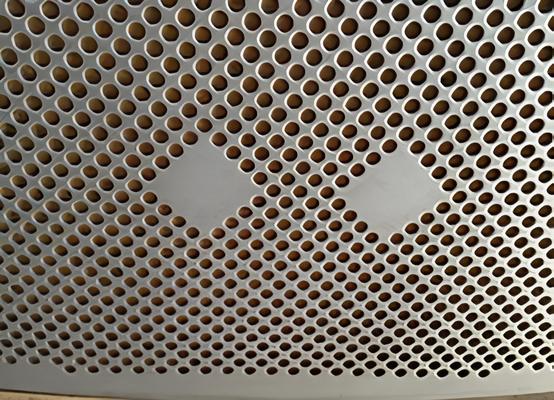
Selecting the Right Process for Your Project
Key Considerations for Choosing Between Piercing, Punching, and Blanking
Selecting the right process depends on several factors:
- Part size and shape
- Production volume
- Required precision
- Material properties
Piercing is often best for small holes in thin sheets. Punching suits larger openings or complex shapes. Blanking is ideal for complete flat parts in high volumes.
Material Type and Thickness: How It Affects the Decision
Material characteristics play a crucial role in process selection:
- Thin sheets (< 3mm): Suitable for all three processes
- Medium thickness (3-6mm): Better for punching or blanking
- Thick materials (> 6mm): May require alternative methods
The material type also matters:
- Soft metals (aluminum, copper): Work well with all processes
- Hard metals (steel, titanium): May need stronger tools or different techniques
Always consider material properties when choosing your fabrication method.
Cost Considerations: Which Process is More Economical?
Cost-effectiveness varies based on several factors:
Production volume:
- Low volume: Piercing or punching may be more economical
- High volume: Blanking becomes more cost-effective
Tooling costs:
- Piercing: Lower initial costs for simple holes
- Punching: Moderate tooling costs
- Blanking: Highest initial tooling investment
Material waste:
- Piercing and punching: Minimal waste
- Blanking: Can produce significant scrap
Production speed:
- All processes are fast, but blanking often has the highest output rate
Consider both upfront costs and long-term production expenses. The most economical choice depends on your specific project requirements and production scale.
Conclusion
Piercing, punching, and blanking are key processes in metal fabrication. Each has unique strengths. Piercing creates small, precise holes. Punching offers versatility for larger openings. Blanking excels in high-volume part production.
Your choice depends on your project’s specific needs. Consider factors like part size, production volume, and material properties. The right process can significantly impact quality, efficiency, and costs.
Do you need a reliable sheet metal parts manufacturer? Shengen is the place to go. We specialize in deep drawing, sheet metal laser cutting, stamping, surface finish, and CNC Machining. Reach out to Shengen Today and seek help from professionals!
FAQs
Can piercing, punching, and blanking be done on the same machine?
Many modern CNC machines can perform all three, but specialized equipment often yields better results. Your production needs and equipment capabilities will determine the best approach.
Which process is more suitable for thin materials?
All can handle thin materials, but piercing is often best for thin sheets and small holes. It typically offers the highest precision and minimal distortion for delicate materials.
How do the costs of these processes compare?
Costs vary based on tooling, production speed, and material waste. Piercing usually has the lowest initial costs, while blanking is the fastest for high volumes. For small runs, piercing or punching may be more cost-effective. For large volumes, blanking’s speed can offset its higher initial costs.
Hey, I'm Kevin Lee

For the past 10 years, I’ve been immersed in various forms of sheet metal fabrication, sharing cool insights here from my experiences across diverse workshops.
Get in touch

Kevin Lee
I have over ten years of professional experience in sheet metal fabrication, specializing in laser cutting, bending, welding, and surface treatment techniques. As the Technical Director at Shengen, I am committed to solving complex manufacturing challenges and driving innovation and quality in each project.


